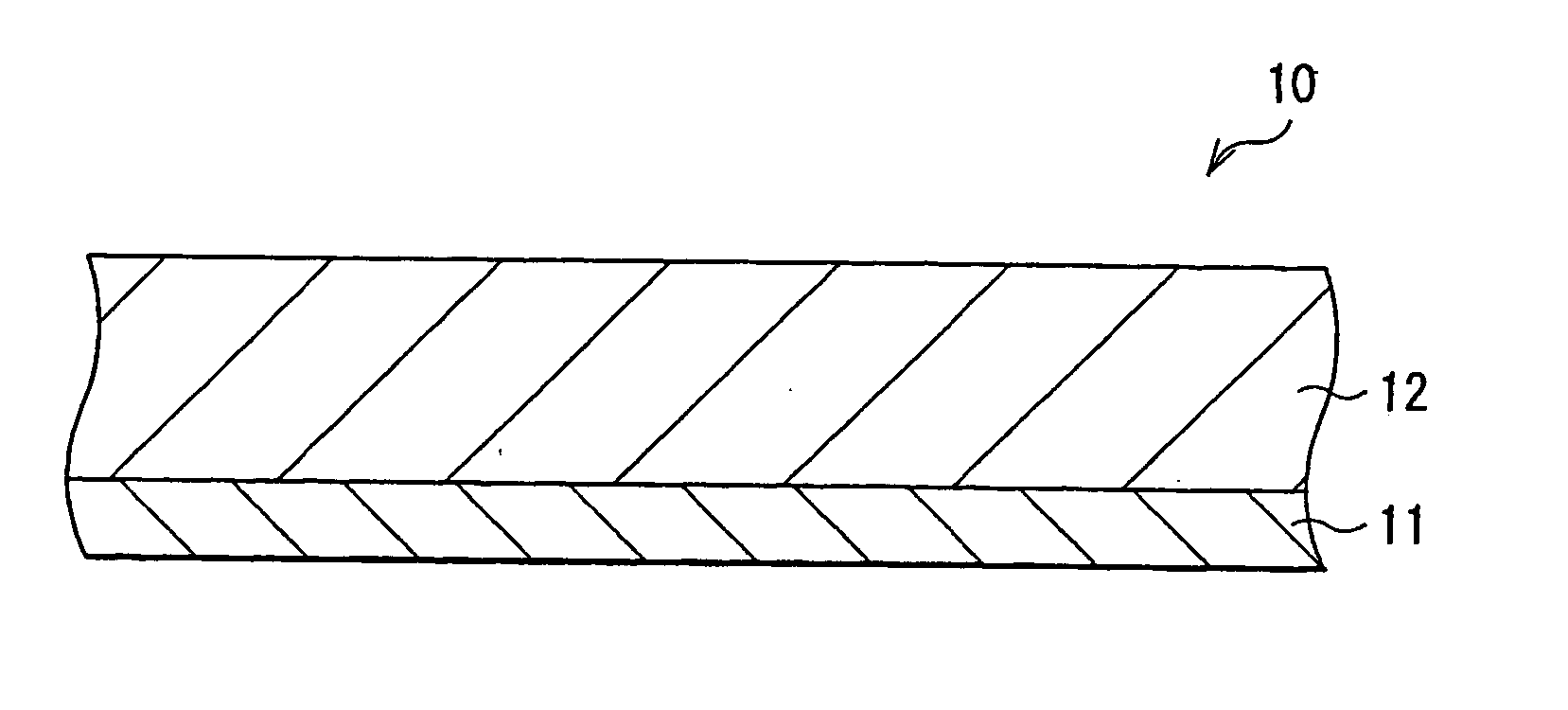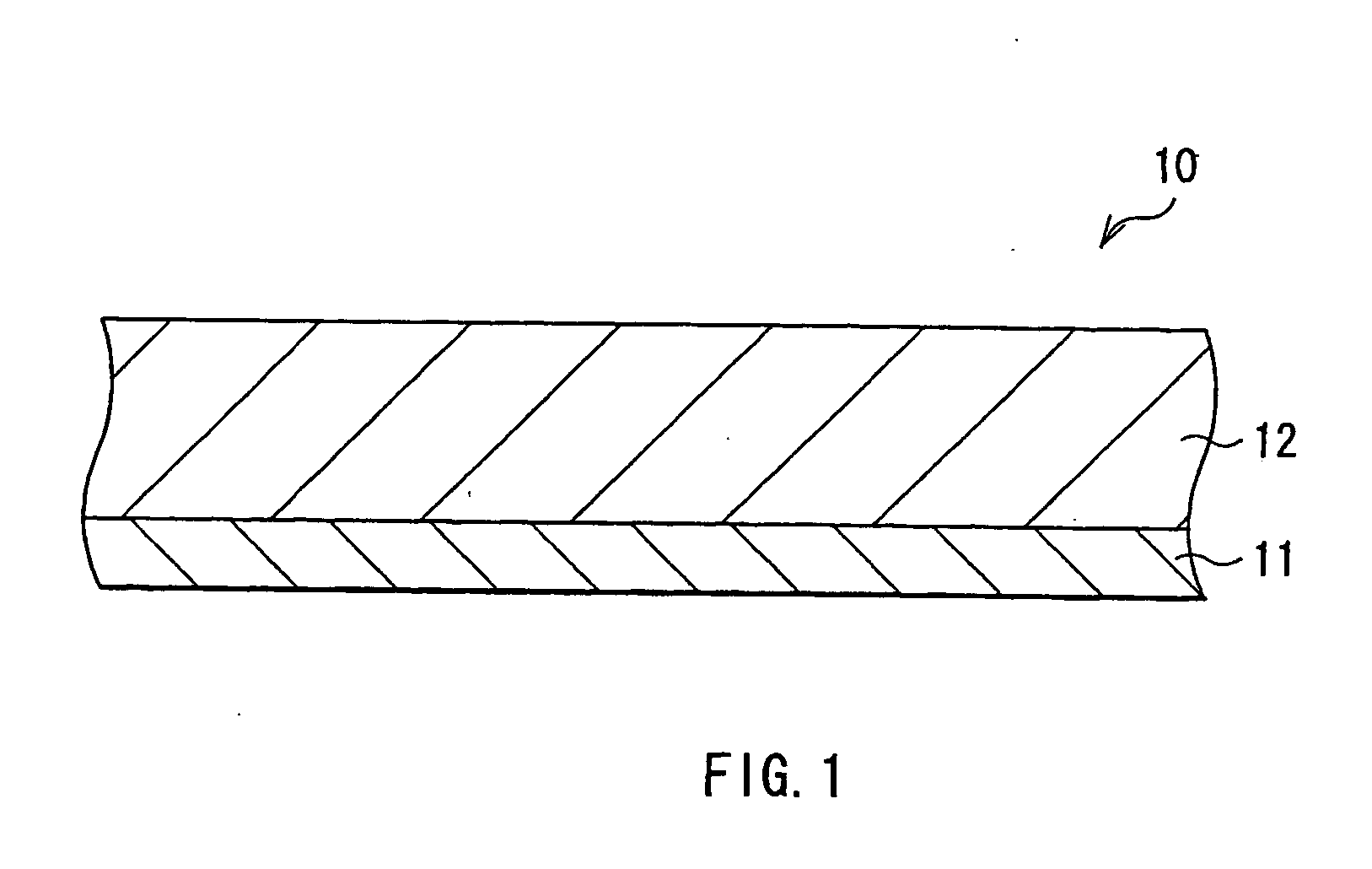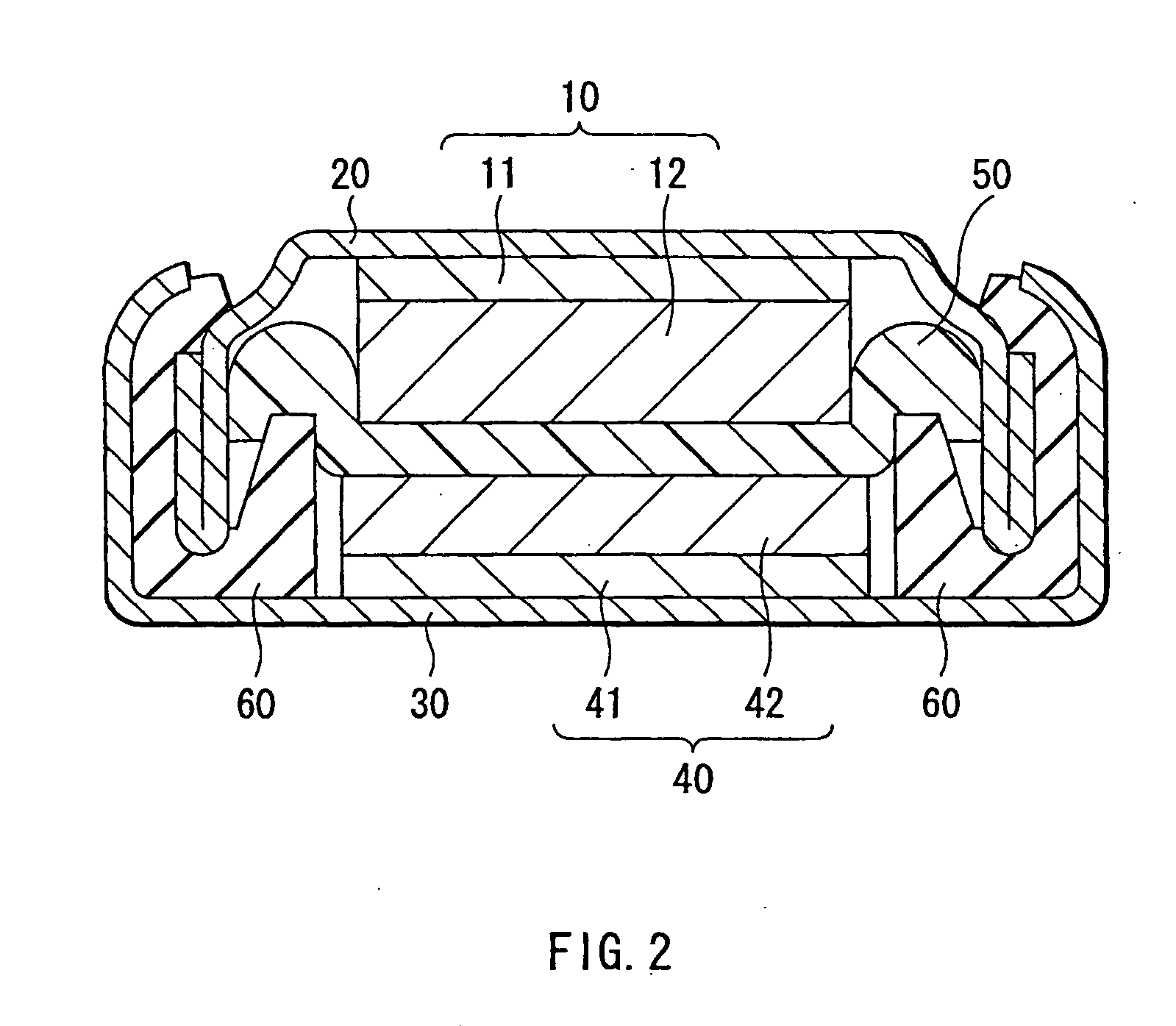Anode and battery
- Summary
- Abstract
- Description
- Claims
- Application Information
AI Technical Summary
Benefits of technology
Problems solved by technology
Method used
Image
Examples
examples
[0081] Further, concrete descriptions will be given of examples of the invention with reference to FIGS. 1 to 4. In the following examples, reference numbers and symbols used in the foregoing embodiment are correspondingly used.
examples 1-1 to 1-7
[0082] Coin type secondary batteries as shown in FIG. 2 were fabricated. First, the anode active material layer 12 made of silicon was formed on the anode current collector 11 made of a copper foil having a thickness of 15 μm by sputtering. Next, metallic lithium was deposited on the anode active material layer 12 by vacuum deposition method. An atmosphere in depositing metallic lithium was under 1×10−3 Pa and a deposition rate was larger than 5 nm / s. An amount of metallic lithium to be deposited, that is, an amount of lithium to be previously inserted in the anode active material layer 12 was sequentially changed as 0.5% , 1%, 5% , 10%, 20%, 30%, and 40% of a lithium insertion capacity the anode active material layer 12 had, correspondingly to Examples 1-1 to 1-7. A thickness of the anode active material layer 12 was set so that a resultant capacity from subtracting a lithium capacity previously inserted from a capacity the anode active material layer 12 had could be constant. That...
examples 2-1 to 2-7
[0094] The anodes 10 of Examples 2-1 to 2-7 and secondary batteries thereof were fabricated as in Examples 1-1 to 1-7, except that the anode active material layer 12 was formed with germanium by sputtering. As Comparative examples 2-1 to 2-3 in relation to Examples 2-1 to 2-7, anodes and secondary batteries thereof were fabricated as in Examples 2-1 to 2-7, except that an amount of lithium to be previously inserted in the anode was changed as shown in Table 2. However, regarding Comparative example 2-3, as in Comparative example 1-3, the anode was deformed too much due to insertion of lithium, and a battery could not be fabricated. Regarding the fabricated secondary batteries of Examples 2-1 to 2-7 and Comparative examples 2-1 and 2-2, the charge and discharge test was conducted as in Examples 1-1 to 1-7, and capacity retention ratios at the 50th cycle were obtained. Further, as in Examples 1-1 to 1-7, after discharge at the first cycle was finished, the anode 10 was taken out to fa...
PUM
 Login to View More
Login to View More Abstract
Description
Claims
Application Information
 Login to View More
Login to View More - R&D
- Intellectual Property
- Life Sciences
- Materials
- Tech Scout
- Unparalleled Data Quality
- Higher Quality Content
- 60% Fewer Hallucinations
Browse by: Latest US Patents, China's latest patents, Technical Efficacy Thesaurus, Application Domain, Technology Topic, Popular Technical Reports.
© 2025 PatSnap. All rights reserved.Legal|Privacy policy|Modern Slavery Act Transparency Statement|Sitemap|About US| Contact US: help@patsnap.com



